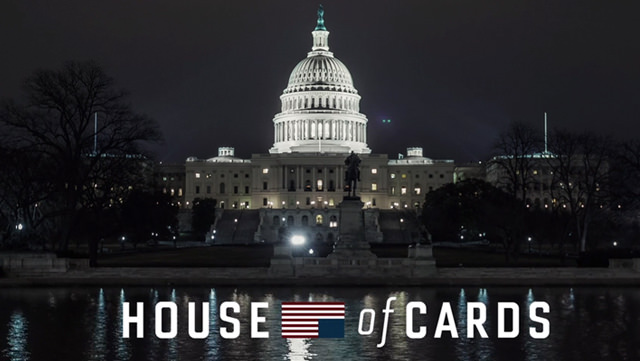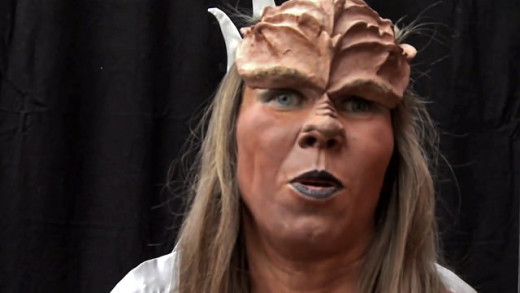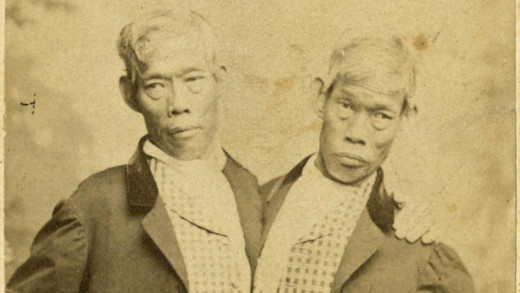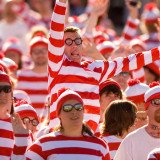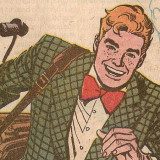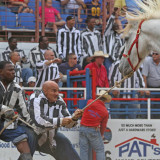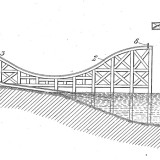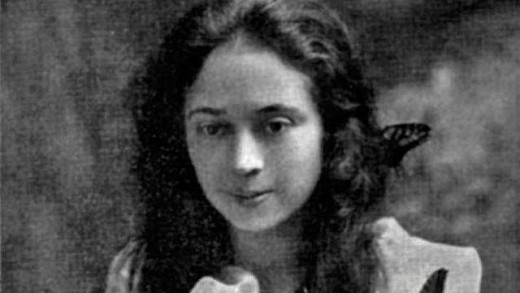House of Cards isn’t that crazy. These 5 places in the credits prove it
The opening credits for House of Cards hint at the show’s tone: stately and creepy.
They aren’t just window dressing. Though much of the show was shot in Baltimore (a choice that’s led to a real-life tax scuffle), the credits feature a few real DC locations. If you think Frank Underwood’s Machiavellian antics are too extreme, watch for these real-life scandal locations that pop up in the credits. Don’t worry, we’ve left out spoilers.
1. The judge who let a dueling revolutionary go free
John Marshall Park features this statue of the judge looking dignified in robes. But when he was Chief Justice, Marshall ruled over a conspiracy that would make Frank Underwood blush.
Aaron Burr (equally famous for killing Alexander Hamilton and for being in that old Got Milk commercial) wanted power so badly that Thomas Jefferson had him arrested for treason. Why? According to T.J., Burr wanted to make his own country in the Southwest, and he went so far as to ask the British for help in undermining America. Burr sought help from the Spanish as well, but he was quickly turned in. Key evidence included a letter—written in elaborate code, of course—in which Hamilton wrote, “The gods invite to glory and fortune–it remains to be seen whether we deserve the boon.” Pretty easy to imagine that in Kevin Spacey’s Southern accent, isn’t it?
Judge Marshall presided over the precedent-setting treason trial. He ruled in Burr’s favor, stating that treason required an “actual assembling of men.” The moral of the story? Frank would have had Judge Marshall in his pocket (though Burr’s political career was ruined).
2. The operatic rise and fall of a big-money donor
The Kennedy Center looks beautiful in this shot, and those who have watched the latest season of House of Cards know that money, opera, and deceit are all prominently featured. It’s not a stretch when you consider Alberto Vilar.
The bio seems promising: Vilar was a star investor and billionaire known for his patronage of the arts. He even promised the Kennedy Center a $50 million donation (part of $200 million he doled out to operas around the world). Unfortunately, he didn’t have the cash. So he defrauded investors of as much as $22 million to cover his personal and charitable contributions. Though the appeals process continues, Vilar is in jail. Let’s hope the same doesn’t happen to opera-loving billionaire Raymond Tusk on House of Cards.
3. The lame excuse for a gigantic train disaster? An icicle did it
This veers into conspiracy theory, but what is House of Cards without a good conspiracy? If nothing else, it proves that the show isn’t too extreme, since it’s never shown a runaway train bursting through the ceiling. That’s what actually happened at Union Station.
In 1953, a train from Pennsylvania ran over the platform because the brakes stopped working. When brakes stop working, bad things happen. This time, the train vaulted over the bumpers meant to stop it, crashed through the stationmaster’s office, and burst into the great hall. The floor wasn’t strong enough to hold it, so the engine fell through the floor into the basement (where the food court is today). Miraculously, nobody was killed.
The conspiracy theory part? It all happened a few days before President Eisenhower’s inauguration. The investigation concluded that the brake line was closed because an icicle fell onto it. Yes, an icicle. Next time you think you’ve found a plot hole, remember that an icicle is the official explanation for a major train crash.
4. The sex scandal bust that outed (and ousted) Lyndon Johnson’s aide
In a drama, a sex scandal a month before an election isn’t a coincidence: it’s a scheme. And that’s what happened in 1964. This shot at 10th and G shows the active center of DC, and in real life it’s home to mega-lobbying firms like The Podesta Group. But lobbyist Remy Danton isn’t the center of House of Cards—for that, we’d need a sex scandal, and history provides one a few blocks up the road.
Walter Jenkins was a longtime aide to LBJ (Kevin Spacey has said that Frank Underwood is modeled on LBJ, so that makes Jenkins the President’s Doug Stamper). In addition to providing political intelligence, Jenkins did legwork for LBJ that included sketchy campaign contributions. However, Jenkins’ closeness to the President made him a liability. In 1964, an October surprise happened when Jenkins was arrested in a YMCA bathroom for “indecent conduct” with another man (we’ll let you fill in the details since, unlike Netflix, our content isn’t explicit). The scandal was quickly eclipsed by international events, but Johnson did order an investigation of possible “security issues” raised by Jenkins’ rendezvous. Jenkins was quickly forced out of the White House despite his many years of service.
5. The master manipulator who played Grant like a fiddle
House of Cards gives us President Walker, a leader who seems far too clueless and easily manipulated to lead the free world. Yet there was a President who dealt with far more corruption and insubordination than Walker—and he happened to be the General who won the Civil War. He’s honored in this shot of his memorial, and Ulysses Grant’s many scandals make it a fitting tribute.
Grant had Presidential appointment scandals, a currency-related gold scandal, and a railroad bribery scandal during his Presidency, along with many other other political disasters. But the most Frank-like presence might be Orville E. Babcock, the man behind the scenes who made the President his puppet.
Babcock was officially Grant’s secretary, but he did a lot more than take notes—he was also at the center of many of the decade’s most notable scandals. Babcock and Grant served together in the Civil War, and that was the source of Grant’s intense (and mistaken) loyalty. Grant listened to Babcock’s recommendations for appointments despite a terrible and corrupt record. Even worse, Babcock wasn’t punished when he secretly tried to annex the Dominican Republic. Babcock was even indicted as part of the corrupt tax-scam Whiskey Ring, but he got off because of Grant’s testimony on his behalf. As if that weren’t enough, he was also accused of being part of a safe burglary conspiracy (though he was acquitted). Grant eventually pushed him out, and at 48 he had a fittingly dramatic death when he drowned during a storm.
These House of Cards locations are probably coincidentally scandalous. But it shows how the series really isn’t that extreme in its depiction of a libidinous and immoral DC. If you think Francis Underwood is tough, remember the man named Orville who actually played the President for personal gain.


